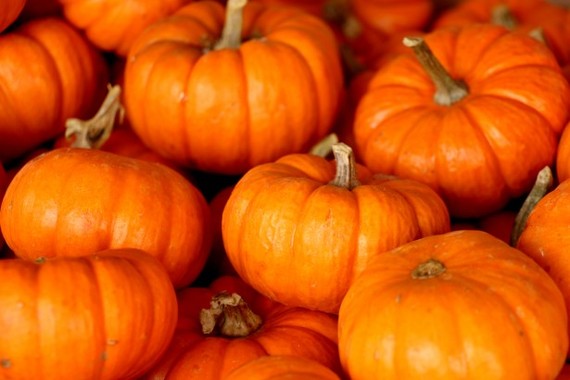We carve faces in them and love the pies, but pumpkin, it turns out, is actually a very nutritious gourd with so many great beneficial components that can make it a great side dish to many meals, much like sweet potatoes, only without a blood sugar spike. It's in the same plant family as squash, cucumber and melons, very similar to butternut squash, yet it's mostly forgotten and left out of our diet. Its bright orange color denotes a rich content of carotenoids, the precursors to vitamin A. Nurses Health Studies indicate that a diet high in carotenoids can decrease the risk of cataracts and cancer.
Pumpkin is chock full of vitamins and minerals, but its star attribute is its high fiber content, making it a tasty way of easing any constipation woes. One cup of pumpkin has eight grams of fiber; more than two slices of whole wheat bread, more than sweet potatoes and any other squash, and about the same as one cup of stewed prunes. It's the best quick and nutritious fix to get the bowels moving. The high fiber content also helps control the blood pressure.
Canned pumpkin does have a robust flavor that needs to be enjoyed, but make sure to buy the 100 percent plain pumpkin as opposed to the pumpkin pie mix with sugar. You can also create your own pies or desserts with a more acceptable sugar than what's in the can. Those include: sucanat, xylitol, date sugar, maple syrup, coconut sugar, stevia. Plain pumpkin as a side dish is just fine with pineapple and spices such as cinnamon, nutmeg, or change it up with some Italian spices and a little butter on top; maybe add some walnuts. Some other dishes to try could be pumpkin pancakes, soup, pumpkin flan, and pumpkin pasta. These recipes can all be found in my new book, So, You Think You Eat Healthy? (Amazon.com) Other dishes to make could be muffins, roasted pumpkin, and pumpkin bread.
A word of caution in creating your pumpkin dishes is that it turns out canned pumpkin works better in recipes because it is a totally different variety than the whole fresh pumpkins you get around Halloween and Thanksgiving. Most canned pumpkin sources use a specialized fruit (yes, pumpkin is technically a fruit); their products are thick, smooth and ready to go. If you were to cook and prepare pumpkin from the fresh product, it comes out mushy because pumpkins are basically full of water, and your pies would never become firm. The watery mass would have to be strained through a sieve to get much of the moisture out. Also, they are a highly fibrous substance, and need to be put in a strong, high-powered blender in order to get it smooth enough. Roasting chunks of seasoned pumpkin is one good way to enjoy fresh pumpkin, and maybe combine it with butternut, sweet potatoes and onion.
Another cautionary note is that not all brands of canned pumpkin use BPA-free cans. BPA is a chemical in the lining of cans that can leach into the food and may cause health issues. The FDA maintains that it is safe, while many health groups do not, especially the more exposure a person gets. Most organic varieties will be in BPA-free cans, such as Farmer's Market and Trader Joe's; Libby's is not. As long as it is in BPA-free cans, choosing the canned pumpkin for recipes is the easier alternative. Bon appétit!

